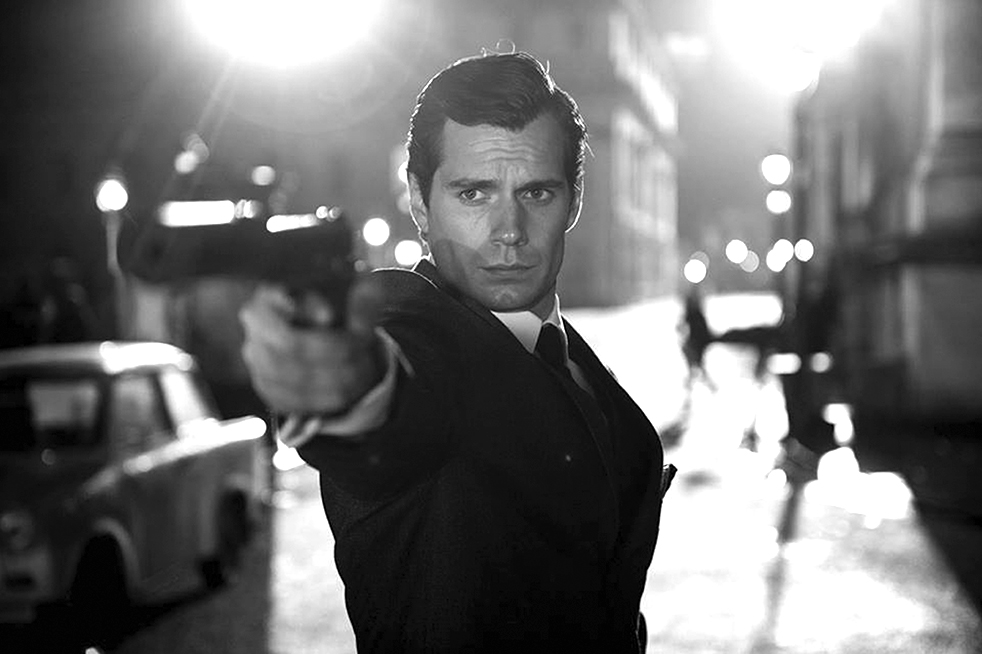Deep in the drama of the Cold War, American CIA agent Napoleon Solo (Henry Cavill, Man of Steel) finds unlikely company in rival Soviet KGB specialist Illya Kuryakin (Armie Hammer, The Lone Ranger) and hardened German mechanic Gaby Teller (Alicia Vikander, Ex Machina) as they join forces to hunt down Gaby’s missing scientist father, Udo (Christian Berkel, Valkyrie). The mission is by no means a creative one—the wonderful band of misfits is tasked with extracting Dr. Teller to prevent the stereotypical world-wide nuclear crisis at the hands of a sinister couple, the Vinciguerras (Elizabeth Debicki, The Great Gatsby, and Luca Calvani).
In many ways, Guy Ritchie’s The Man from U.N.C.L.E. is a standard, unimaginative, albeit humorous and fun spy film. The main nuclear conflict is not at all an interesting one though. Rather, the only truly intriguing dynamic of the nearly nonexistent plot is its protagonist foils. This recreation of the cult 1960s TV show of the same name surprised audiences with its superb character development.
Even from one of the first scenes (a car chase scene that rivals The Bourne Identity in creativity), Ritchie clearly establishes Solo’s calm, quirky demeanor contrasted to Kuryakin’s intense, short-tempered mentality. Chuckles ensue as the two ridiculously attractive protagonists exchange witty banter as they grow as characters and learn more about each other to the point where they are close to what “normal people” call friends.
On the negative end of the spectrum, the other characters are weak. The lead female role — a mechanic dolled up for fancy parties — does account for some humorous quips, but does not provide the stunning sharpness apparent in a Bond girl or the like. The antagonists are even worse. Victoria Vinciguerra, accompanied by her very unimportant spouse Alexander, is an extremely stereotypical, sinister femme fatal lacking any innovation.
Blockbuster directors with enormous budgets often spend the vast majority of their funds on elaborate pyrotechnics, but Ritchie is a special filmmaker. He allocates much of the budget to the details of the film and to the sets, seen in this spy thriller as well as his 2009 creation, Sherlock Holmes, which all but shoves a theater audience into a DeLorean to present them with the wonderful surroundings and elements of 19th century England.
The Man from U.N.C.L.E. engenders a similar effect, depicting the ridiculous and dramatic environments and characters of the 1960s bourgeoisie scene. Ritchie beautifully portrays an ostentatious, sleek and accurate representation and recreation of 1960s fashion with seersucker suits, popping orange dresses, pillbox hats and shiny oxfords. Other seemingly small design details make all the difference in the film and give it an authentic feel, from Solo romping about Rome on a bright yellow Vespa to the models of the Formula One cars used at the Grand Prix event.
Ritchie also incorporates fantastic cinematography, giving a modern edge to the classic spy story. Innovative split screen action montages and well-executed mood juxtaposition scenes bridge the gap between plot developments, taking the place of disposable karate chop scenes and drawn-out foot chases so common in spy thrillers. In one instance, Ritchie conveys both humor and peril, as Solo lounges in a parked carrier truck, flipping through Italian radio channels, sipping prosecco and eating a picnic sandwich from a wicker basket while his partner is in a lethal boat race.
With this somewhat underwhelming recreation, Ritchie establishes a reputation as a technically sound and creative filmmaker, and with a few solid projects under his feet, he has the ability and the potential to make a true masterpiece of cinema. As for the film itself, The Man from U.N.C.L.E. is by and large an entertaining movie created to make money. It is by no means a great movie, and will not be in contention for awards, but it is worth the trip to the theater for an undeniably fun time.
Our Take: 2.5/5 stars
